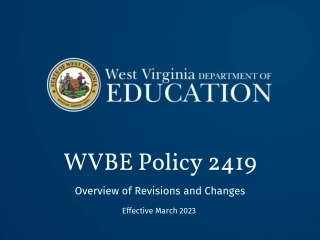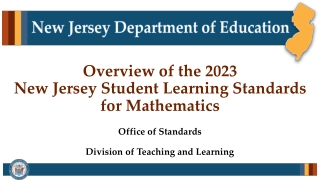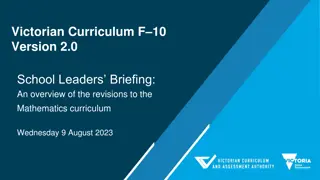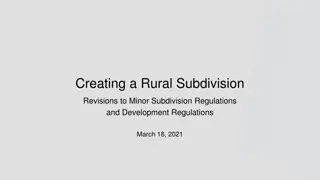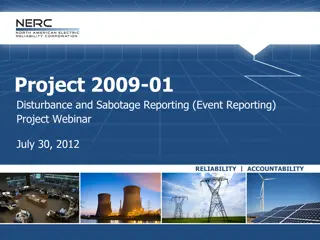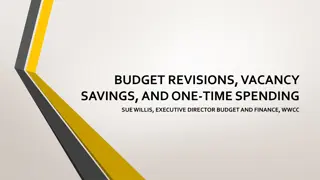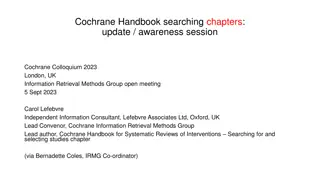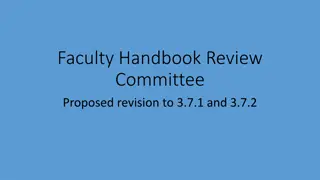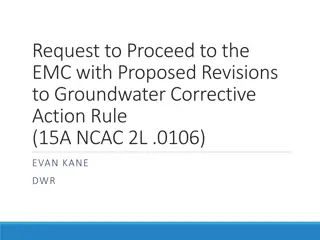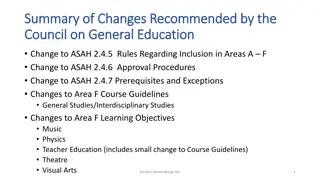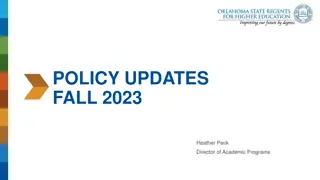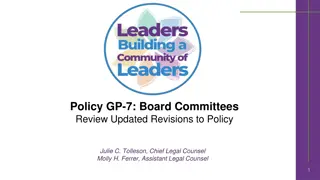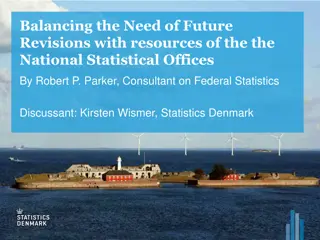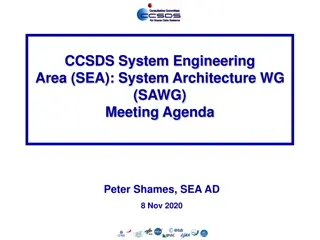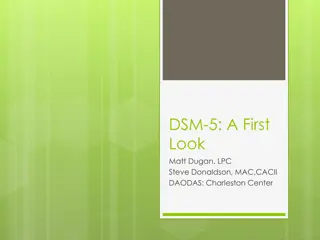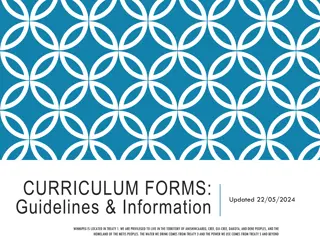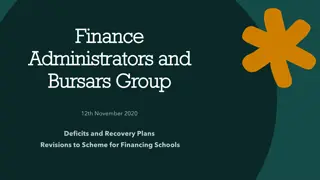
IP&B Summer 2018 Program Review and Accomplishments Report
Explore the achievements of IP&B's Summer 2018 program review, including the development of proposals for the new Governance Council, program redesign initiatives, and the creation of new templates and rubrics. Learn about the mission statement, primary goals, and the move towards a five-year program review cycle.
Download Presentation

Please find below an Image/Link to download the presentation.
The content on the website is provided AS IS for your information and personal use only. It may not be sold, licensed, or shared on other websites without obtaining consent from the author. If you encounter any issues during the download, it is possible that the publisher has removed the file from their server.
You are allowed to download the files provided on this website for personal or commercial use, subject to the condition that they are used lawfully. All files are the property of their respective owners.
The content on the website is provided AS IS for your information and personal use only. It may not be sold, licensed, or shared on other websites without obtaining consent from the author.
E N D
Presentation Transcript
IP&B Program Review Summer Work Report October 5, 2018 Kristy Lisle, Summer Chair of IP&B
IP&B Thank You! Melia Arken Valerie Fong Teresa Ong Laureen Balducci Andre Meggerson Bret Watson Lisa Eshman Kathy Perino Bruce Mc Leod Kennedy Bui Elaine Kuo Lisa Ly Doreen Finkelstein Isaac Escoto Rachelle Campbell Lan Truong Carolyn Holcroft Eric Reed Debbie Lee Elias Regalado Paul Starer Kurt Hueg Simon Pennington Special Thank You! Ram Subramaniam, Co Facilitator Kelaiah Harris, Recorder
PaRC charged Summer 2018 IP&B to develop two proposals for the new Governance Council: 1) Program Elimination for Budget Reduction: Develop a proposal for determining program discontinuance necessary to meet targets for budget savings. The proposal may include criteria, the rationale for their inclusion, as well as suggestions for a process of review. The Council may use the proposal as a foundation for consideration, or reject the proposal in part or in whole. 1) Redesign of Program Review: Outline a proposal to the new governance for a process to develop new program review guidelines for implementation 2019-20, including suggestions for a purpose, process, and templates.
IP&B Summer 2018 Charge: 1) Program Elimination for Budget Reduction: 2) Redesign of Program Review: To fulfill our charge, IP&B determined we would develop a new: Instructional Discipline Template Addendum Template for CTE Programs Instructional Discipline Template Evaluation Rubric
IP&B Summer Accomplishments Developed a program review mission statement and identified primary goals for program review Defined the three different program review categories: 1. Instructional Disciplines one template with a CTE addendum. Began draft template and rubric. 2. Instructional Support Disciplines - common template and rubric will be developed with individualized items specific to support discipline 3. Student Support Services common template and rubric will be developed with individualized items specific to the support service Developed proposal for the Council to move the college to a five year program review cycle (was every three years)
Draft Instructional Discipline Template Two types of response prompts: 1. General questions mission statement, SLOs 2. Questions based on data elements, typically falling into one of two categories: Category A: General question explaining the data trends Category B : Prompt to identify actions for improvement
PROGRAM REVIEW INSTRUCTIONAL DISCIPLINE TEMPLATE PROGRAM MISSION STATEMENT Mission Statement: PROGRAM LEVEL STUDENT LEARNING OUTCOMES Please list the program level student learning outcomes:
ENROLLMENT TRENDS 100 Words or Less FTES ENROLLMENT TRENDS A. In the data table above, what does the FTES data trend indicate? the data trend shows an increase in FTES the data trend shows a decrease in FTES the data trend shows no change Discuss the factors that would help the college understand these trends and whether there are tangible reasons for the increase or decrease. (100 words or less) B. Looking at the data trend, has the faculty/staff discussed proposed actions to stabilize/increase FTES? yes no If yes, describe the proposed actions for stabilizing/increasing the FTES. (100 words or less)
Instructional Discipline Template Evaluation Rubric Structured to provide: 1. Examples and definitions 2. Criteria to understand the levels of program effectiveness
Needs Some Improveme nt to Meet the Standard Needs Major Improvement to Meet the Standard Template Items Meets the Standard Excellent Evaluation Criteria and Description Criteria The mission statement 1. Clearly states the purpose of the program 2. Indicates the primary function 3. Indicates the activities of the program 4. Describes the programs aspirational goals for the future and what the program hopes to achieve 5. Reflects the program s priorities and values 6. Indicates who the students and/or stakeholders are 7. Is aligned to the college mission statement 8. Is clear and concise Exceeds expectations for all 8 criteria Addresses all 8 criteria Addresses 4 to 7 of the criteria Addresses fewer than 4 of the criteria Definitions The program mission statement is a concise statement of the general values and principles which guide the curriculum. It sets a tone and a philosophical position from which follow a program s goals and objectives. The program mission statement should define the broad purposes the program is aiming to achieve, describe the community the program is designed to serve, and state the values and guiding principles which define its standards. Mission Statement The mission statement is a public declaration that community colleges use to describe their founding purpose and major organizational commitments (i.e., what they do and why they do it). It may describe a school s day-to-day operational objectives, its instructional values, or its public commitments to its students and community. (https://www.edglossary.org/mission-and-vision/; https://assessment.uconn.edu/wp- content/uploads/sites/1804/2016/06/HowToWriteMission.pdf; also based on material from the UCF Academic Program Assessment Handbook and material from the University of San Diego)
Needs Some Improvement to Meet the Standard Needs Major Improvement to Meet the Standard Template Items Meets the Standard Excellent Evaluation Criteria and Description FTES has decreased over the time span is greater than 30% The narrative includes fewer than 2 of the criteria The FTES has decreased no more than 10% FTES has decreased over the time span by 10% to 30% FTES has improved over the time span FTES - Enrollment Trends What does the FTES data trend indicate? Narrative Criteria The A Category Narrative demonstrates 1. An understanding of the trend 2. Reason for the trend(s) are provided 3. Reasons include items within department control The narrative Exceeds expectations the narrative could be used as an exemplar The narrative includes all 3 of the criteria The FTES Narrative Explanation narrative includes 2 of the criteria Definitions, Examples and Explanations Narrative reasons could reflect: Culturally relevant pedagogy and/or curriculum The curriculum and course materials are current Scheduling Instructional modality of the program course(s) delivery CTE labor market data Industry trends Narrative Criteria The B Category Proposed actions in the narrative demonstrates 1. Actions are informed by data 2. Actions are within department control 3. Actions are demonstrable 4. Outcomes are measurable 5. Possible to accomplish including short term, as well as long term (e.g., aspirational and practical) FTES Action Narrative (if needed) The narrative Exceeds expectations the narrative could be used as an exemplar The narrative includes all 5 of the criteria The The narrative includes 4 of the criteria narrative includes fewer than 4 of the criteria
IP&B Requests the Council consider the following: 1. Suspend the Program Review Cycle for the 2018-19 Academic Year (includes all programs regardless of color rating in years past) a) Programs that received a yellow or red rating during their last program review will complete a new program review in the first year of implementation. Implementation is planned for 2019-2020 academic year. b) If the college must make program elimination(s) due to budget cuts in the future we will not use program review as a measure but instead request The Council commission a Viability Study Group. The Viability Study Group would determine the criteria and process for determining program evaluation and elimination including reviewing all programs. This will ensure the culture of continuous improvement and reflective practice is embedded in Program Review rather than one that is fear-based. Program Review will focus on institutional and program effectiveness.
IP&B Requests the Council charge the group to continue: 2. Charge IP&B to continue as a Council Study Group to develop: The Annual Budget Planning Template. This work should occur in collaboration with the Finance and Revenue Resource Committee, and include a budget planning timeline. This should be a priority for use this 2018-2019 year. Program Review Manual to include (but not limited to) timelines, schedule for each program in the new five year cycle, definition of institutional effectiveness, roles, responsibilities, and explanations. Including the roles and responsibilities for the Institutional Effectiveness Coaches. Drafting templates for all three categories: o Instructional Disciplines and a CTE addendum o Instructional Support Disciplines o Student Support Services
IP&B Requests the Council consider the following 3. Charge IP&B to provide a progress update to the Council in January 2019


